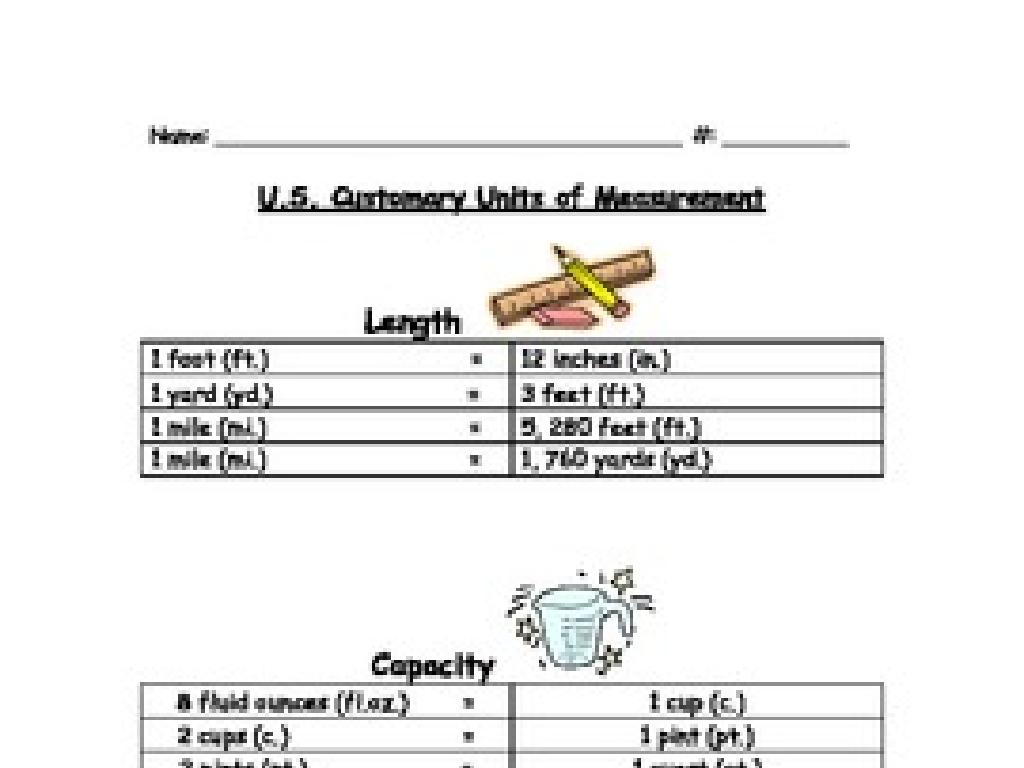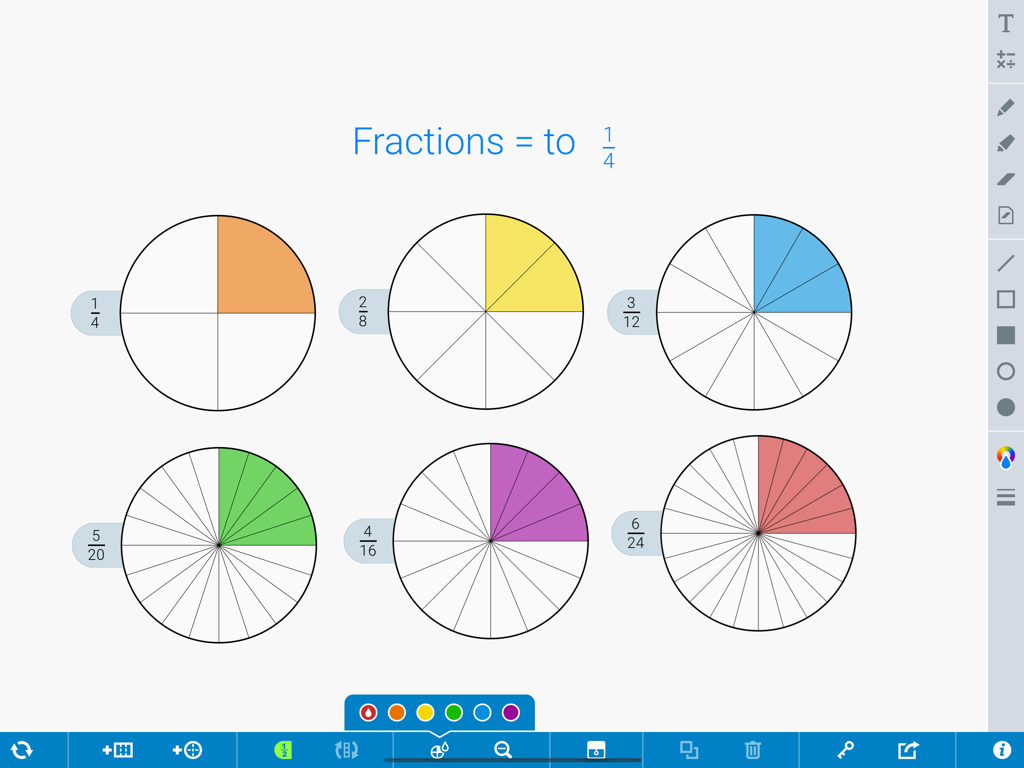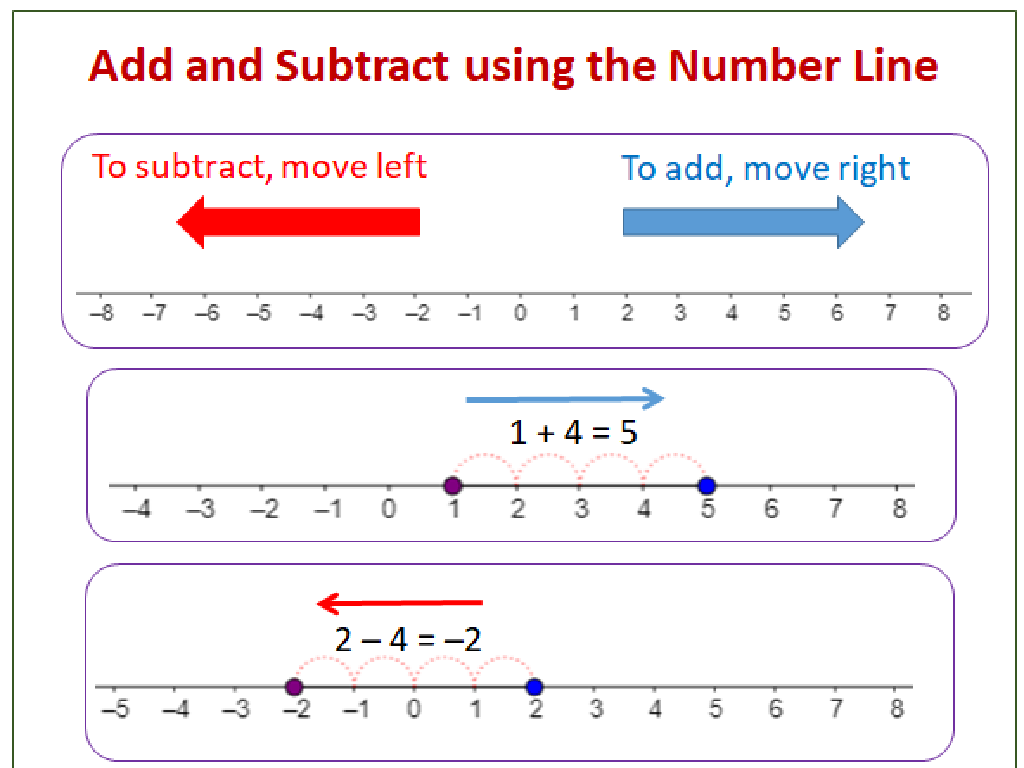Multi-Step Word Problems Involving Remainders
Subject: Math
Grade: Fifth grade
Topic: Multi-Step Word Problems
Please LOG IN to download the presentation. Access is available to registered users only.
View More Content
Today’s Adventure: Solving Mysteries with Numbers!
– Understanding multi-step problems
– Problems that require more than one step to solve.
– Real-life importance of word problems
– Helps with everyday challenges like cooking or budgeting.
– Strategies for solving with remainders
– Break down the problem, solve step-by-step, and interpret remainders.
– Practice problems
– We’ll work through examples together in class.
|
This slide introduces students to the concept of multi-step word problems and their relevance to everyday life. Emphasize that these problems are like puzzles where each step brings them closer to the solution. Discuss how solving these problems is a skill that can help in real-world situations, such as dividing a pizza among friends and figuring out how many slices each person gets or managing money. Teach them to approach these problems methodically by breaking them down into smaller, manageable steps and carefully considering what to do with remainders. Provide practice problems that allow students to apply these strategies, and encourage them to explain their reasoning during the next class.
Solving Multi-Step Word Problems with Remainders
– Understand multi-step problems
– A problem requiring more than one math operation to solve.
– Follow steps like a recipe
– Example: Buying toys with $20
– If 3 toys cost $5 each, how much change do you get from $20?
– Calculate change and remainders
– Use subtraction to find the remainder after the purchase.
|
This slide introduces students to multi-step word problems that involve remainders. Start by explaining that these problems are like puzzles that require more than one math operation to solve. Compare the process to following a recipe, where each step must be completed in order to reach the final answer. Use the example provided to illustrate how to approach such a problem: first, multiply the cost of one toy by the number of toys to find the total cost, then subtract this from the initial amount of money to find the change. Emphasize the importance of performing each step in order and checking work for accuracy. Encourage students to practice with similar problems for homework.
Key Words in Multi-Step Word Problems
– Addition: ‘total’, ‘sum’, ‘added to’
– Subtraction: ‘difference’, ‘less than’, ‘remaining’
– Multiplication: ‘times’, ‘product of’
– Division: ‘divided by’, ‘per’, ‘quotient’
– ‘Per’ often indicates division, like ‘cookies per person’
|
This slide is aimed at helping students identify key vocabulary that signals specific mathematical operations in multi-step word problems. Understanding these terms is crucial for determining the correct operation to apply when solving problems. For addition, words like ‘total’ and ‘sum’ indicate that numbers will be combined. Subtraction keywords such as ‘difference’ and ‘less than’ suggest comparing or reducing quantities. Multiplication may be identified by terms like ‘times’ or ‘product of,’ indicating repeated addition or scaling. Division keywords include ‘divided by’ and ‘quotient,’ which are used when distributing a quantity evenly or determining how many times a number is contained within another. Encourage students to underline or highlight these keywords in word problems and decide which operations to use based on the context. Provide practice problems where students can apply this strategy.
Understanding Remainders in Word Problems
– Division may not be even
– Remainders: The leftovers
When we divide, the remainder is what doesn’t fit evenly into the groups.
– Example: Sharing cookies
If 5 friends share 11 cookies, each gets 2 cookies, with 1 cookie remaining.
– Solving with remainders
We’ll learn to solve problems where we divide and find out the remainder.
|
This slide introduces the concept of remainders in division as part of multi-step word problems. It’s crucial for students to understand that division doesn’t always result in a whole number and that the remainder is the part that doesn’t fit into the even division. Use the cookie-sharing example to illustrate this concept in a relatable way. Explain that each friend gets an equal share of the cookies, but there may be some cookies left over, which is the remainder. Encourage students to think of similar situations where they have to share things evenly and end up with leftovers. This will help them grasp the concept of remainders more concretely. In the next class, practice solving different word problems that involve remainders to solidify their understanding.
Let’s Practice Together: Remainders in Word Problems
– Class problem walkthrough
– Step-by-step operation identification
– Solve and find the remainder
– Discuss the remainder’s meaning
– Does the remainder represent something left over, or does it need to be rounded up for a whole unit?
|
This slide is designed for a collaborative class activity where students will engage in solving a multi-step word problem together. Start by presenting a word problem that involves multiple steps and a remainder. Guide the class through the problem, asking them to identify which mathematical operations to use at each step. Once the operations are clear, solve the problem step by step as a class, ensuring that each student follows along and understands the process. When you reach the remainder, have a discussion about what it represents in the context of the problem. For example, if dividing items among a group, does the remainder indicate leftover items, or if rounding to the nearest whole number is necessary? Provide 4-5 different problems in the notes for students to work on individually or in small groups, with varying contexts to help them understand the concept of remainders in real-life situations.
Your Turn to Solve: Remainders in Action
– Tackle a new word problem
– Partner up or solve solo
– Key words are your clues
– Words like ‘leftover’ or ‘divided by’ hint at remainders
– Record every step, note remainders
– If 13 cookies are shared among 4 kids, how many does each get, and how many are left?
|
This slide is an interactive activity for students to apply their knowledge of multi-step word problems that involve remainders. Encourage them to carefully read the problem, identify key words that signal division and remainders, and to write down each step of their thought process. Remind them that remainders are an important part of the answer and should not be ignored. Provide guidance on how to approach the problem and offer examples of key words to look for. Have several problems ready for students to choose from, catering to different levels of difficulty. After the activity, discuss as a class some of the different strategies students used to solve the problems.
Share Your Solutions: Remainders in Word Problems
– Present your problem and solution
– Explain your remainder finding
– How did you use division to find the remainder?
– Discuss various solving methods
– Did you use estimation, long division, or another strategy?
– Reflect on the problem-solving process
– Think about the steps you took and how you checked your work.
|
This slide is designed for students to engage in peer learning by sharing their approach to solving multi-step word problems that involve remainders. Students should clearly present the word problem they solved and walk the class through their solution step-by-step. Emphasis should be placed on how they determined the remainder, whether through long division or another method. Encourage discussion on different strategies that can be used to solve such problems, fostering a collaborative learning environment. The reflection part should guide students to think critically about their problem-solving process and understand the importance of verifying their answers. For the teacher, prepare to facilitate the discussion, ensuring each student has the opportunity to share and learn from others.
Class Activity: Remainder Relay!
– Work in groups on word problems
– Pass problems to next group for review
– Check the answers and explain any mistakes
– Each group solves a new problem
– First to finish all correctly wins!
|
This activity is designed to encourage teamwork and reinforce the concept of remainders in multi-step word problems. Divide the class into small groups and provide each with a set of word problems. Once a group solves a problem, they pass it to the next group to check the answer and provide an explanation for any errors. Then, the checking group solves a new problem passed to them from another group. This relay continues until all problems are solved. The first group to correctly complete all problems wins. Ensure that each problem requires a different multi-step process involving remainders to challenge the students and keep the activity dynamic. Possible activities could include problems related to real-life scenarios such as dividing items into groups, sharing costs, or measuring distances.
Wrapping Up: Remainders in Word Problems
– Excellent work on multi-step problems!
– Homework: Practice worksheet
– Solve more problems with remainders at home
– Each problem is a unique challenge
– Keep practicing for perfection
– Practice is key to mastering math skills
|
Today’s class focused on solving multi-step word problems that involve remainders, an important skill in mathematics. For homework, students will receive a worksheet with problems similar to those we worked on in class to reinforce their understanding. Remind students that each problem they encounter is like a new adventure, full of opportunities to apply their skills and learn. Encourage them to approach their homework with a positive mindset, understanding that practice is essential for improvement. As they work through the worksheet, they should remember the strategies discussed in class and not get discouraged by challenges. Offer support and let them know they can bring any questions to the next class.






